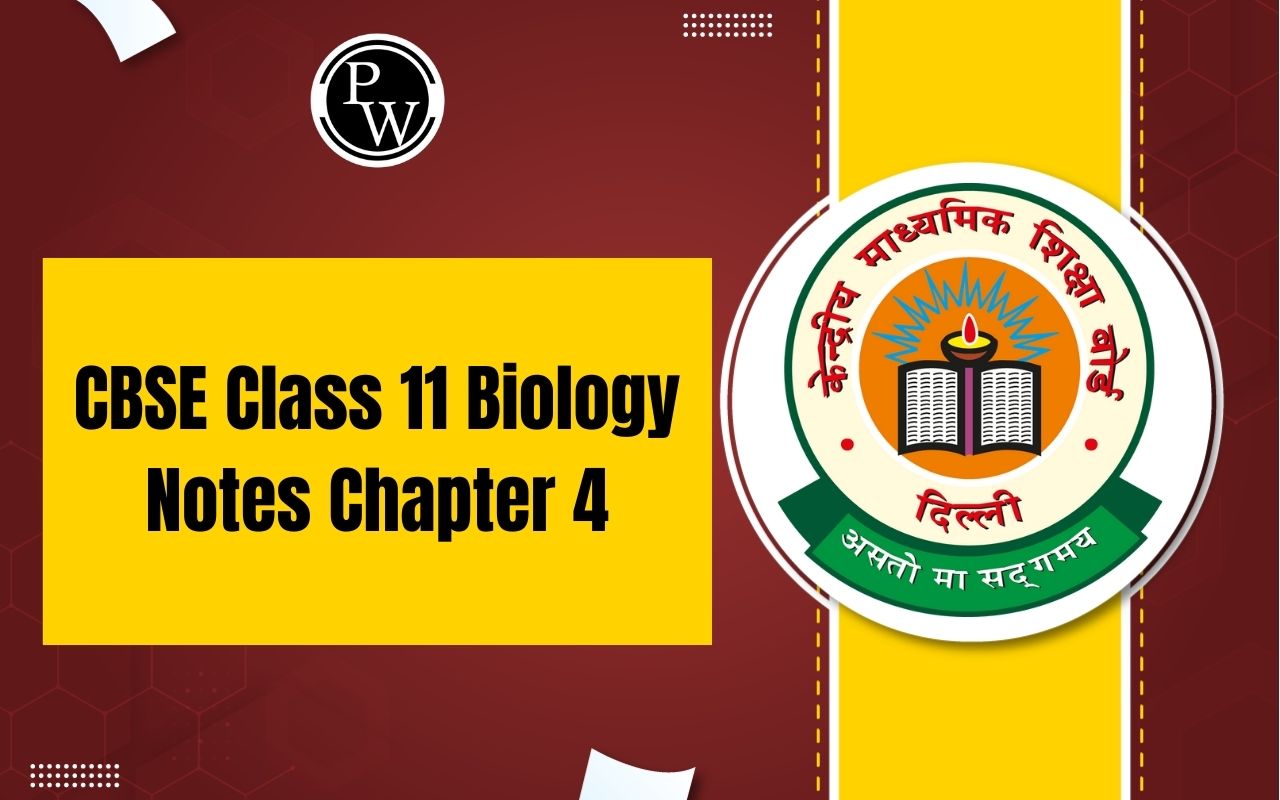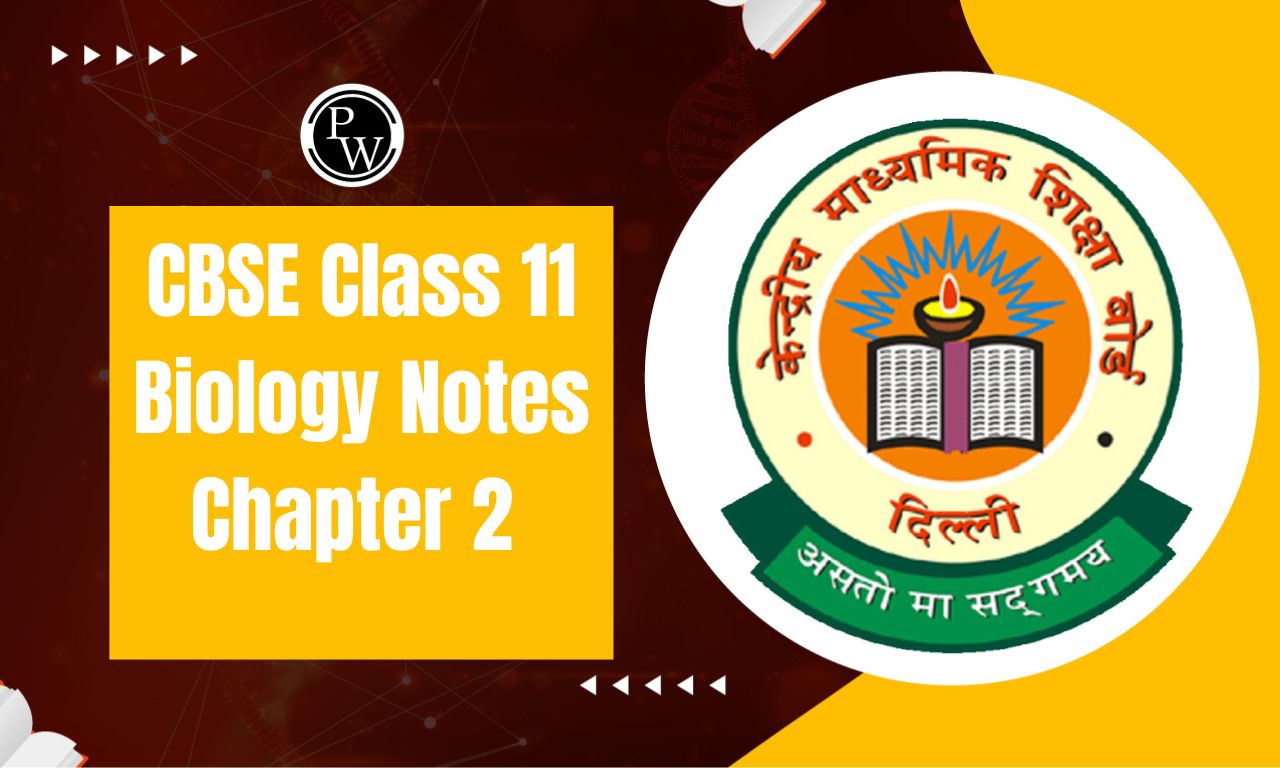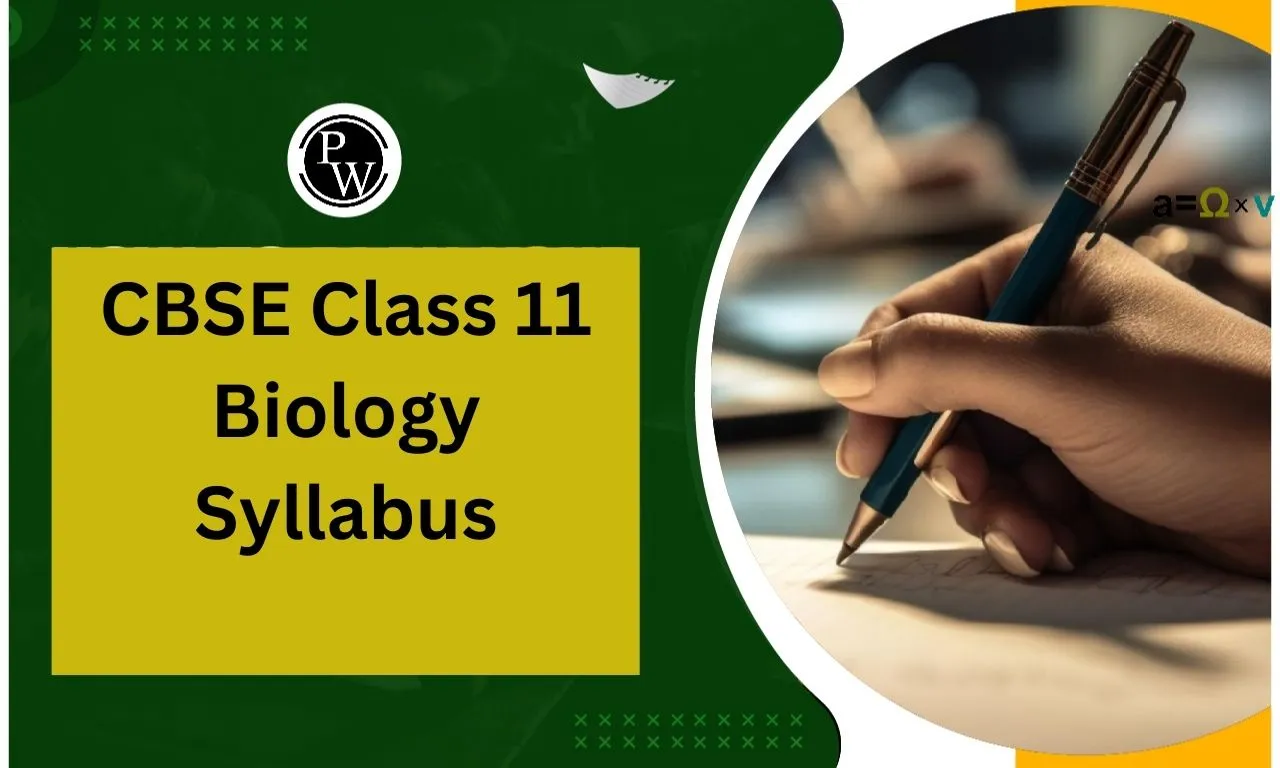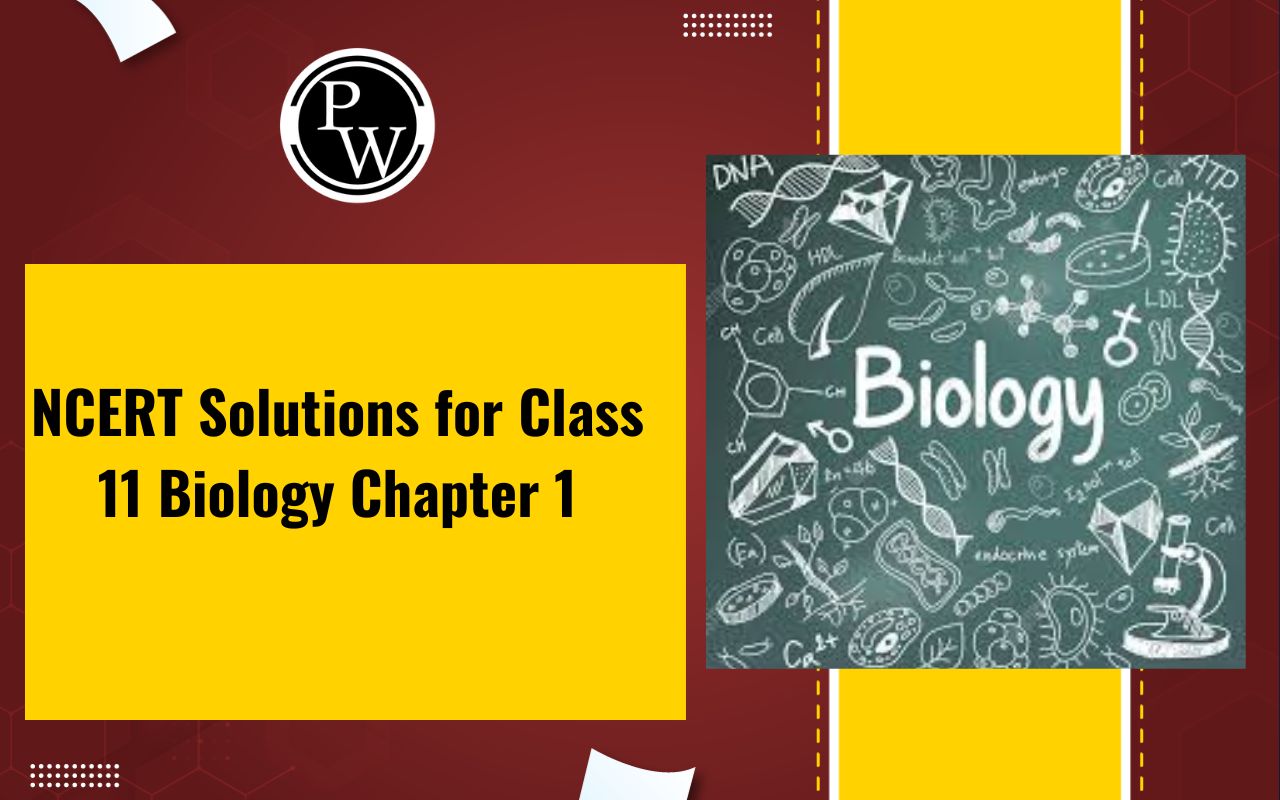
Important Questions for Class 11 Chemistry Chapter 7: Class 11 Chemistry Chapter 7 on Redox Reactions covers the fundamental concepts of oxidation and reduction, which are crucial in various chemical reactions. Key topics include the identification of oxidizing and reducing agents, balancing redox reactions using the half-reaction method, and understanding the concept of oxidation states.
Students also learn about electrochemical cells, including galvanic and electrolytic cells, and the process of electrolysis. Important questions often involve calculating oxidation states, identifying redox reactions, balancing reactions, and understanding the applications of redox processes in real-life scenarios like corrosion and electroplating. Understanding these concepts is essential for mastering the topic.Important Questions for Class 11 Chemistry Chapter 7 Overview
Chapter 7 of Class 11 Chemistry, "Redox Reactions," is crucial as it lays the foundation for understanding various chemical processes that involve the transfer of electrons. Redox reactions are central to numerous biochemical processes, industrial applications, and environmental systems. Key topics include oxidation and reduction, balancing redox reactions, and the concepts of oxidation states and their determination. Mastery of these concepts is essential for further studies in chemistry and applications such as electrochemistry, corrosion, and the functioning of batteries. Practicing important questions from this chapter helps build a strong understanding and problem-solving skills critical for exams and real-world scenarios.Important Questions for Class 11 Chemistry Chapter 7 PDF
Below, we have provided a PDF containing important questions for Class 11 Chemistry Chapter 7 Redox Reactions. These questions cover key concepts and are designed to help you understand the core principles of redox reactions, including oxidation, reduction, and balancing redox equations. This resource will aid in your exam preparation by offering practice on various types of problems and theoretical questions related to the topic.Important Questions for Class 11 Chemistry Chapter 7 PDF
Important Questions for Class 11 Chemistry Chapter 7 Redox Reactions
Below is the Important Questions for Class 11 Chemistry Chapter 7 Redox Reactions -- Define oxidation reaction?
Ans: A reaction in which oxygen gets added, or removal of a hydrogen atom takes place is called an oxidation reaction.
- Define reduction reaction?
Ans: A reaction in which oxygen gets removed, or the addition of a hydrogen atom takes place is called an oxidation reaction.

4. What are the most essential conditions that must be satisfied in a redox reaction?
Ans: A total number of electrons lost should be equal to the total number of electrons gained by the oxidising agent.
5. Define oxidation in terms of electron transfer.
Ans: Loss of electrons performed by the reducing agent is called oxidation. If the oxidation number of an element changes from 0 to +1, then it is said to be oxidised.
6. What is meant by reduction?
Ans: Gain of electrons performed by the oxidising agent is called oxidation. If the oxidation number of an element changes from 0 to -1, then it is said to be reduced.
7. Define an oxidizing agent. Name the best reducing agent.
Ans: A substance that can easily gain electrons is called an oxidising agent. Fluorine molecules are the best oxidising agent.
8. What is meant by reducing? Name the best reducing agent.
Ans: A substance that can easily lose electrons is called a reducing agent. Lithium is the best reducing agent.
9. What happens to the oxidation number of an element in oxidation?
Ans: Oxidation number increases during oxidation. If the oxidation number of an element changes from 0 to +1, then it is said to be oxidised.
10. Name the different types of redox reaction
Ans:
-
Combination reactions
-
Decomposition reactions
-
Displacement reactions
-
Disproportionation reactions
10. Define disproportionation reaction.
Ans: In a disproportionation reaction an element in one oxidation state is oxidized and reduced simultaneously.
11. All decomposition reactions are not redox reactions. Give a reason.
Ans: It is because in a decomposition reaction both the products or one of the two products should be in elemental form, so all decomposition reactions are not redox reactions. Example- Decomposition of calcium carbonate.
12. Complete the following redox reactions and balance the following equations-
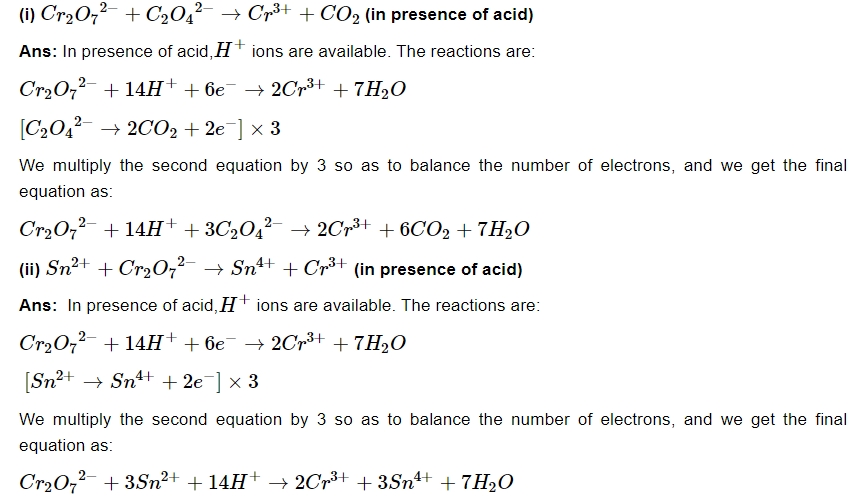
13. Write correctly the balanced half-reaction and the overall equations for the following skeletal equations.
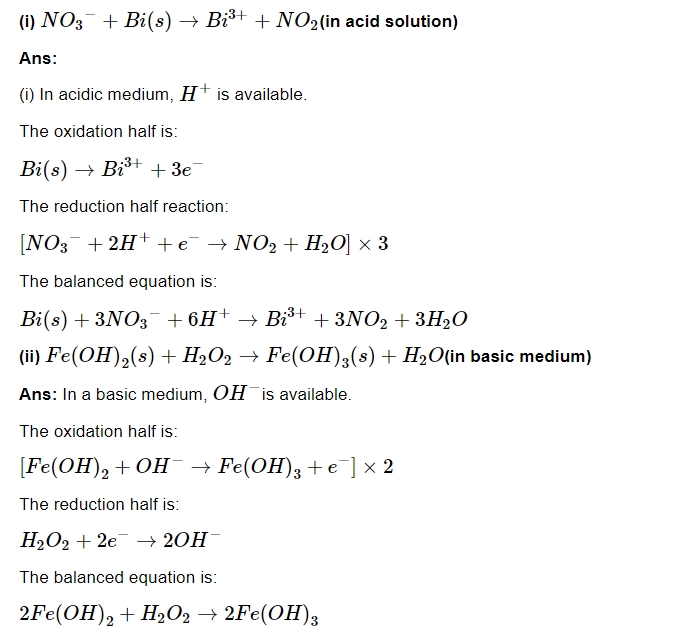
14. Define half–cell.
Ans: A half cell consists of conducting electrolyte and electrode structure, separated by a Helmholtz double layer.
15. What is the role of a salt bridge in an electrochemical cell?
Ans:
-
Provide electrical neutrality
-
Prevents the mixing of the electrolytes.
Benefits of Solving Important Questions for Class 11 Chemistry Chapter 7
Solving important questions for Class 11 Chemistry Chapter 7 on Redox Reactions can offer several benefits for students, especially in terms of understanding the topic and preparing for exams. Here are some key advantages: 1. Deepens Understanding of Key ConceptsRedox reactions are fundamental to understanding various chemical processes, including those in biology, industry, and the environment. By solving important questions, students can better grasp key concepts such as oxidation states, electron transfer, and balancing redox reactions.
2. Improves Problem-Solving Skills Regular practice with a variety of problems enhances problem-solving abilities. Students learn to identify different types of redox reactions (disproportionation, combination, etc.) and develop strategies to balance them effectively. 3. Helps Master Reaction Balancing One of the main challenges in redox reactions is balancing them correctly. Solving important questions provides students with practice in both the half-reaction method and the oxidation-number method , ensuring mastery over this critical skill. 4. Increases Speed and Accuracy Familiarity with different question formats allows students to become quicker and more accurate. This is particularly beneficial during exams, where time management is crucial. 5. Enhances Conceptual Clarity Important questions often highlight common misconceptions and tricky areas, enabling students to clarify doubts and reinforce their understanding of concepts like electron gain/loss, the role of oxidizing and reducing agents, and the significance of the oxidation number .Important Questions for Class 11 Chemistry Chapter 7 FAQs
What is the purpose of redox reactions?
What factors affect redox reactions?
Do redox reactions gain or lose electrons?
What are two applications of redox reaction?
What reaction is never redox?



